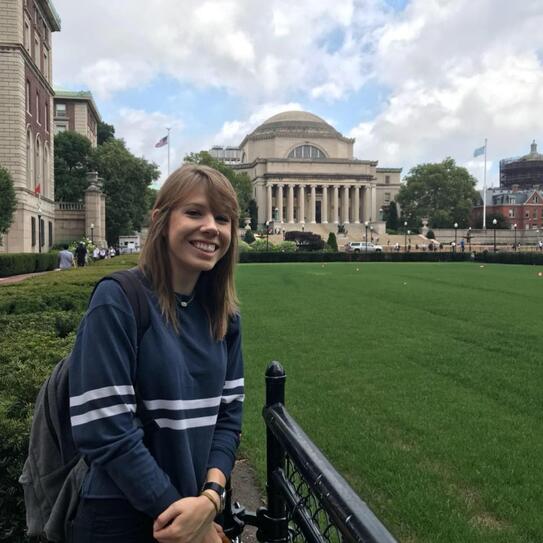Cait Walsh

What are your career goals?
Before coming to Columbia Business School, I spent two years doing data modeling and policy research at the Federal Reserve Board in D.C., focusing on domestic expectations about monetary policy as conveyed in Treasury and interest rate derivatives markets. Janet Yellen is my research inspiration, and it would be a dream job to end up on the Board.
What brought you to business school? Why did you choose Columbia?
My economics degree from OU was taught from a liberal arts perspective, so my time at the Fed revealed my lack of an academic foundation in finance specifically. I also knew that I wanted to pivot into industry in order to expand my skillset and range of experience. Thus, I was effectively searching for a two-year program that would equip me for the private sector while also exposing me to PhD finance coursework. Columbia’s Master of Science in Financial Economics is just about the only program fitting those specifications.
What has been your favorite part of the MS experience so far?
The best part of the program is also its most unique aspect: Master’s students have the ability to enroll in most Finance PhD first- and second-year courses. The rigor of these classes is demanding but absolutely necessary in order to fully grasp the concepts being taught.
What is it like going to business school in New York City?
New York is a once-in-a-lifetime city with incredible opportunities — which can make it difficult to spend weekends holed up studying! Beyond the views, entertainment, culture, and food, the most important contribution of the city to a CBS student is the accessibility of so many major players in the financial industry. During my first semester in the program, I worked at a part-time internship for a “Big Four” bank in Midtown while taking a full-course load on campus. It was a busy semester, but I gained extremely valuable experience, knowledge, and connections through my internship, which was only possible because of Columbia Business School’s location.
Favorite faculty/courses so far?
Both Dr. Harry Mamaysky’s and Dr. Stijn Van Nieuwerburgh’s asset pricing courses have been very useful for understanding the theoretical underpinnings of the field and have exposed me to numerous topics in the empirical literature, including risk factor identification and model building.
How has the expertise of your professors impacted your learning?
It would be difficult to overstate the importance of the quality and experience of the School’s faculty. From learning about microstructure models through Dr. Larry Glosten, who wrote one of the foundational papers on bid-ask dynamics and transaction prices, to studying stochastic processes and derivatives pricing with Dr. Michael Johannes, who knows something about everything — the core of the program is the faculty and their teaching, which is world-class.
What do you want to do next? How has Columbia uniquely prepared you for your future?
I would like to enter the industry doing quantitative analysis and investment strategy design, most likely on the sell-side. This corner of the industry obviously involves coding and familiarity working with data, but is also impossible without a strong foundation in asset pricing, risk decomposition, and the academic literature.
What will you take with you?
I will take with me a tremendous amount of new knowledge, boxes of course notes, dozens of papers I still need to read, and a free Patagonia!